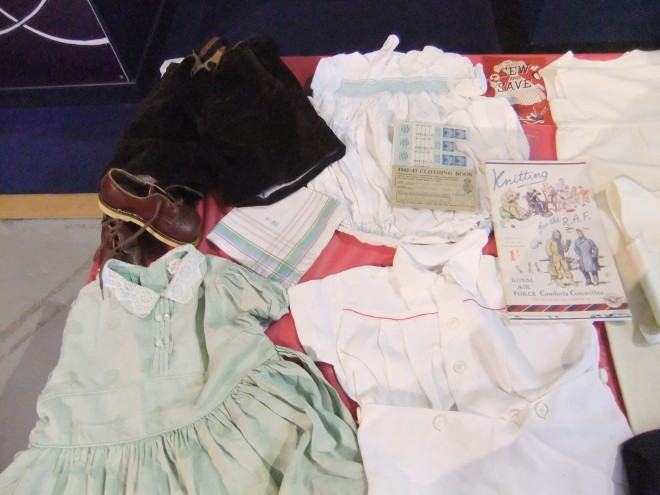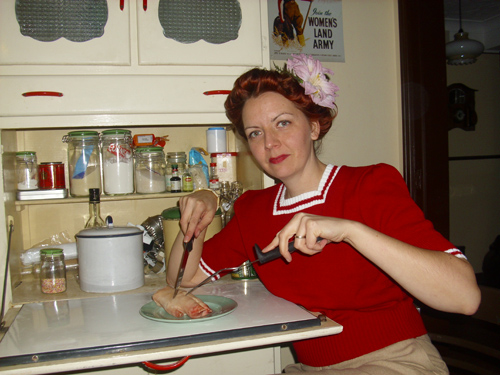Edna will be providing good old-fashioned beauty advice and wartime cooking tips at World Wars Experience, National Museum of Flight, East Fortune on Sunday 27 May 2012. The two World Wars will come to life with living history presenters and their vehicles, live battles, vintage beauty workshops and posing for wartime portraits!
The 1940s are so inspirational for me; it’s the whole hair, make up and clothing. The effort people put in to how they looked really showed. Look at almost any period photo and the women look incredible, especially when you consider the shortages, hours worked and the hardships of war. This might explain why I tend to wear period clothing on a regular basis and I am looking forward to bringing period clothing with me to World Wars Experience.

What I find interesting is that clothes from the 1940s really do not look anything when they are on the hanger, but once worn on a feminine figure, the garment comes to life in a way modern clothes just can’t. However, I do not want to paint a picture of a fashion heaven.
Clothes rationing began on 1st June 1941, because there was a major shortage of cloth reaching Britain. Much of that was needed for military uniforms, tents, parachutes etc and government restrictions meant that clothing although simple was of good quality and fairly priced. Rationing coupons where limited to 66 per person a year. That is just about enough to buy one complete outfit. If you fancy a challenge I have listed a number of items with their point allocation, what would you buy for the whole year?
| Raincoat or overcoat 11 | Jacket, short coat 8 | Dress, woollen 8 |
| Pullover, jumper 3 | Dress, other material 5 | Trousers 6 |
| Blouse, cardigan, jumper 3 | Shorts 3 | Skirt 5 |
| Overalls, dungarees 4 | Apron, pinafore 4 | Shirt, woollen 6 |
| Pyjamas 6 | Shirt 4 | Night-dress 5 |
| Underwear 2 | Petticoat 3 | Pair of socks 1 |
| Collar, tie 1 | Pair of gloves 2 | Pair of boots or shoes 3 |
The number of ration coupons required per year to purchase items for purchase of clothing: Source Imperial War Museum, London.
Another form of rationing during the war and post war years was food rationing and I am looking forward to speaking on this topic at World Wars Experience. Food rationing was brought in at the begining of the war in 1940 and lasted until 1954, an amazing nine years after the war had ended. Despite meals made from pigs’ trotters and a liberal use of cabbage, I plan to explain how our grandparents can tell us a thing or two about cooking today, even though they cooked in a world 70 years ago, in which you were only allowed one egg and three rashers of bacon a week!

I am really looking forward to meeting you at World Wars Experience. I plan to bring a number of artefacts which would have been found in the wartime kitchen. Hopefully some will be familiar to you, others maybe not so. If you would like to find out more about my family’s little world in the 1940s do visit our website www.harryandedna.co.uk
